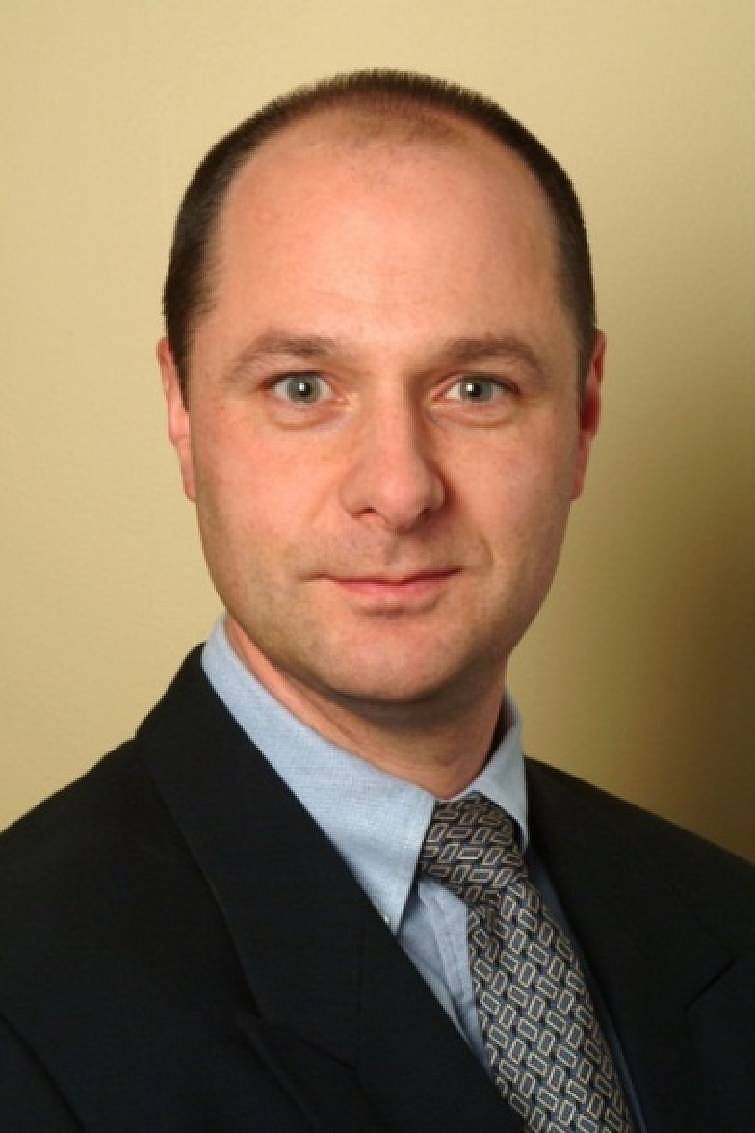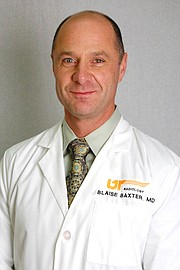More Info
Award: The Innovation in Health Care Award honors a company or person primarily responsible for a scientific discovery or new processes, device or service that can save lives or improve the quality of lives.Winner: Tennessee Interventional and Imaging AssociatesAccomplishment: The Chattanooga company has developed a clot-removal technique that is an alternative to what was long the only FDA-approved treatment in stroke care. The protein-based drug tissue plasminogen activator (tPA) can dissolve stroke-causing clots.
Chattanooga has a team of four doctors you could call the "stroke busters" - they're the ones you're gonna want to call on if you're hit by a massive stroke and only have a few hours to get the blood flowing back into your brain to stave off irreversible damage.
"We're more like the clot-grabbers," said Justin Calvert M.D., who's on the team with Dr. Blaise Baxter, Dr. Steve Quarfordt and Dr. Harris Hawk. The four doctors work for Tennessee Interventional and Imaging Associates, which is under contract to do radiology work at Erlanger hospital.
They're pioneers in the field of what's known as endovascular therapy or mechanical thrombectomy - clot-removal through the use of specially designed devices. It's an alternative to what was long the only FDA-approved treatment in stroke care, a protein-based drug called tissue plasminogen activator (tPA) that's administered intravenously to help dissolve stroke-inducing clots. Some in the field call it "Drano for your brain."
The doctors are one reason Erlanger has been recognized nationally for its stroke treatment. A few years ago, when studies suggested that removing blood clots was no better than using tPA, the doctors rallied and took part in landmark studies that supported what they saw in their practice: that grabbing clots can have near-miraculous benefits.
'Lazarus effect'
The FDA approved the use of tPA in 1995, and it has been considered the "gold standard" for stroke care. But tPA has serious limitations for many patients, the stroke doctors at Erlanger say.
It's only effective within a crucial four-and-a-half-hour window - time that has often elapsed by the time most stroke patients get to a hospital, the doctors say. And for for the most severe strokes, where clots are stuck in the brain's larger blood vessels, tPA doesn't work, no matter how quick the response.
So doctors began looking for alternatives. When Baxter came to Erlanger in 1999, the only direct approach in addressing the large clots was to thread a tiny tube, called a microcatheter, through an artery into the brain's blood vessels to directly deliver tPA to the clot.
Over time, clot-grabbing devices continued to improve.
The first generation of clot grabber, which team members no longer use, looked like a corkscrew. It was tricky to use. One Erlanger doctor described using it as like catching a "30-pound catfish on 3-pound test line."
Then, clot-grabbers evolved into a vacuum-like device called an aspiration catheter, which sucks clots out.
Next came the model that was a stent used to retrieve the clot, now known as a "stent retriever." The tiny device features a stent that expands into a tiny wire cage.
"You put a catheter through the clot and then you deploy a stent," Calvert said. The stent tangles with the clot, and latches onto it as the radiologist reels it in while watching on an imaging screen.
"You can just literally pull it out of the body," Calvert said. "The stent does not stay inside of the patient. You just drag the stent and the clot out."
Clot-grabbing procedures can take from about 40 minutes to two hours.
"Time is brain, is what we like to say," Calvert said. A stroke can kill 3 million brain cells per minute.
Once the clot is removed, the effects of blood flowing back into the brain can be immediate.
"Sometimes you get what I call a Lazarus effect," Calvert said, referring to the biblical character whom Jesus raised from the dead. "They can't talk and they can't move one side of their body - and then, all of a sudden after the procedure - they can. Sometimes it's very dramatic."
As the clot-grabbing technology evolved, the field blossomed. But while the devices are FDA-approved, the procedures themselves weren't considered standard stroke treatment - chiefly because there were no studies that showed they worked better than tPA.
Clot-grabbing dealt a setback
A major setback to the field came in 2013, when three trials ended without proving that the patients who underwent the clot-grabbing procedures benefited any more than patients who just had tPA. After those trials, doctors who knew that interventional treatment worked got organized, Hawk said.
"It obviously got the field very energized," he said.
So when the opportunity arrived for Erlanger to join in key trials to prove this technology, the doctors jumpe on board the SWIFT PRIME and ESCAPE trials. Both were international trials and Erlanger was the lead enrolling center with the best outcomes in the SWIFT PRIME trial and one of the lead enrolling U.S. sites for ESCAPE.
Baxter and Erlanger neurologists Dr. Tom Devlin and Dr. Biggya Sapkota became co-principal investigators for the study.
The Erlanger team was convinced that the earlier trials had not passed muster for two simple reasons: Doctors had not used the most up-to-date tools, and they had not selected the appropriate patients. Patients could not be selected for the interventional treatment based only on their symptoms; they had to be picked on the condition of their brain,
More sophisticated 3D scanning technology can let neurologists quickly evaluate whether the patient had a large-vessel clot, pinpoint where it was, and see how much of the brain had been affected from a lack of oxygen.
"The scans show just how much irreversible brain damage has occurred, and how much is still fixable," Sapkota said.
For the trial, Erlanger doctors selected only patients whose brain scans showed they had enough undamaged brain for the procedure to work. And once they screened the patients, the interventional radiologists used the most-up-to-date stentreivers to remove the clots.
But it's not just about the technology. It's about the process, doctors say. Erlanger stroke doctors say they have a "well-oiled" operation for treating stroke patients which starts with helping to train EMTs and paramedics to recognize symptoms before patients are even delivered to the hospital, and which includes having a stroke team on staff at the hospital 24/7.
Having gotten the protocol down pat, Sapkota said doctors are now able to get patients from the door to scanners within 10 minutes. Their average time from the scanners to getting the clot out is less than 90 minutes. Clot-retrieval procedures can now be as fast as 15 to 20 minutes from start to finish.
Such clockwork procedures, coupled with the large volume of stroke patients within a 13-county region the hospital draws from, meant that Erlanger contributed more patients to the SWIFT PRIME trial than any of the other medical centers included across the globe.
These trials lasted less than two years, and were stopped early because the results were so positive.
Studies support clot-grabbing
Along with SWIFT PRIME and ESCAPE, three other trials showed the benefit of removing clots mechanically. These five trials became known as "The Big Five."
"There's five landmark trials that prove that mechanical thrombectomy works better than tPA alone," Calvert said.
Now that the Erlanger team helped prove the benefits of endovascular therapy, they're involved in a study called DAWN that will examine the benefits of clot-grabbing in what's known as a "wake up stroke," Hawk said, or one took place at an unknown time during the night.
The study will see how long after a stroke clot-grabbing still offers benefits.
"Beyond six hours, it's still a gray area," Hawk said.
In the meantime, the clot-grabbers will keep helping stroke victims. Erlanger Health System hired Tennessee Interventional and Imaging Associates (TIIA) in July 2014 to replace the onsite diagnostic radiology group it had contracted with for seven years, RadCare, which is owned by national company Emcare.
Robert Brooks, Erlanger's chief operating officer, said then that having TIIA handle both diagnostic radiology - where doctors read patient scans and make diagnoses, and interventional radiology - where radiologists perform minimally invasive procedures - will bring more "cohesiveness" to patient care.
Another advantage of working with TIIA, he said, would be the end of what's called "nighthawking" - the practice of outsourcing scans to be read at other locations in the country during late-night hours. Under TIIA, radiologists will be at the hospital 24 hours to read the images, which will improve quality of care, Brooks said.

